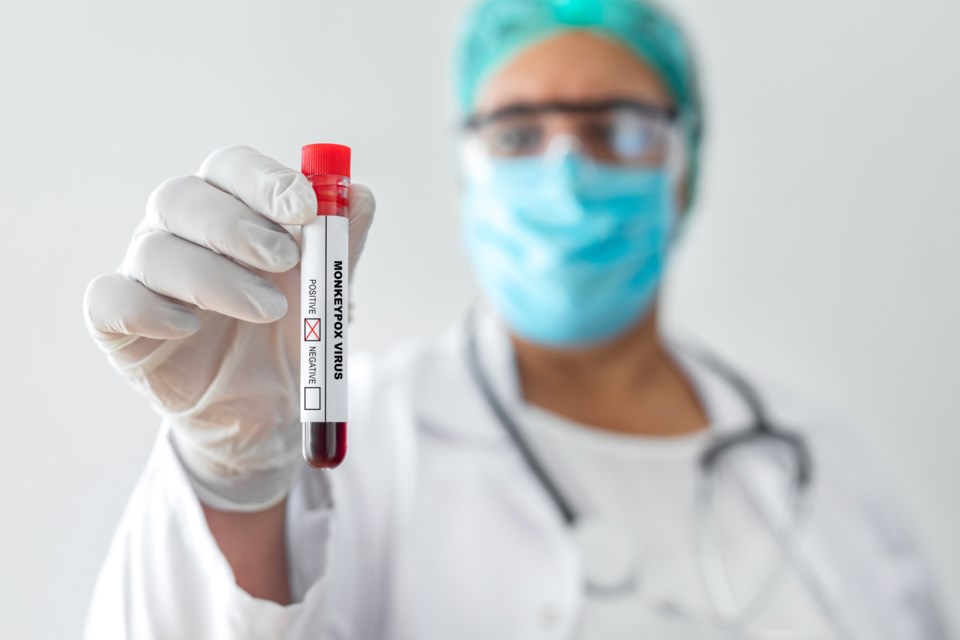What is monkeypox? How do you catch it? What are its symptoms? Where did it start? Now that Saskatchewan has two confirmed cases of monkeypox, these are questions that have been popping up frequently.
The second case of monkeypox was identified in Saskatchewan on July 13. The first and second cases are not linked to each other, and the risk for Saskatchewan remains low. The public health investigation is ongoing but shows that the acquisition likely occurred outside the province. The Public Health Agency of Canada is working with provinces, territories, and international partners, including the World Health Organization to monitor the situation, focussing on the containment of the outbreak.
The current case numbers in Canada are:
- Quebec with 299 cases.
- Ontario with 194 cases.
- British Columbia with thirty-two cases.
- Alberta with twelve cases.
- Saskatchewan with two cases.
Monkeypox is an infection caused by a virus, which was first identified in 1958 in Africa. The first case reported in humans was recorded in 1970. This virus is part of the same family of viruses as smallpox.
Infected individuals can spread this virus at the first signs of illness and will continue to be infectious until all the scabs from the lesions have fallen off. That is why it is important to be aware of the signs, symptoms, and ways this virus spreads. Like many viruses, monkeypox is spread through saliva and respiratory droplets in the air from coughing or sneezing, skin-to-skin contact, prolonged face-to-face contact, and sharing personal items like eating utensils, water bottles, cigarettes, drinks, lipstick, and more items like those.
Symptoms occur within 5-21 days after exposure, with the first symptom being a fever (>38 C). Additional symptoms include swollen lymph nodes, chills, stuffy nose, exhaustion, extreme weakness, and a rash or lesions. A rash will begin 1-3 days after the first symptoms, starting on the face, palms of hands, and the soles of feet. The rash moves through stages starting as a flat lesion, progressing to be slightly raised and firm, this is followed by fluid-filled blisters with clear and then yellow fluid, at the end, the lesions will crust and fall off.
To get diagnosed with monkeypox, the lesion must be tested in a laboratory.
Though, since monkeypox is not common, testing for other rash-related illnesses is also recommended. Currently, there are no specific treatments for monkeypox, but fever-reducing medication, rest, and fluids may help to relieve symptoms.
General healthy practices that can help prevent monkeypox include:
- Staying home when you are sick or have skin sores
- Cover your mouth and nose when coughing
- Wear a medical face mask
- Wash your hand with soap and water frequently
- Clean frequently touched surfaces
- Avoid kissing/ sharing personal items
If you find yourself diagnosed with monkeypox please consider the following, to mitigate further spread:
- Stay home and do not let visitors at your home while infected
- Cover your lesions with clothing, sheets, or bandages
- Do not share bedding, clothing, utensils, or other personal items. Handle and clean your own dishes, and laundry, and dispose of foiled items in a lined garbage bag
- Limit physical contact with others
- Wear a medical mask when you are physically close to others
- Avoid contact with animals and pets
- See your primary healthcare provider if your lesions are infected (For example increased pain, redness, swelling, or drainage.)
Severe cases and death rarely occur; only 1 per cent of cases become severe or pass away because of the virus. Death is more common for children under twelve afflicted with the virus. Additionally, monkeypox may cause pneumonia, encephalitis (inflammation of the brain), skin infections due to itching, and vision problems.
Presently, the risk of infection is extremely low in Saskatchewan. Though if you have travelled to areas of Canada or the world with confirmed cases or have been in contact with an individual with suspected or confirmed monkeypox and develop a fever or other symptoms of the virus within three weeks, you should call HealthLine 811 or consult a healthcare professional immediately.
For more information on the virus visit https://www.saskatchewan.ca/monkeypox




